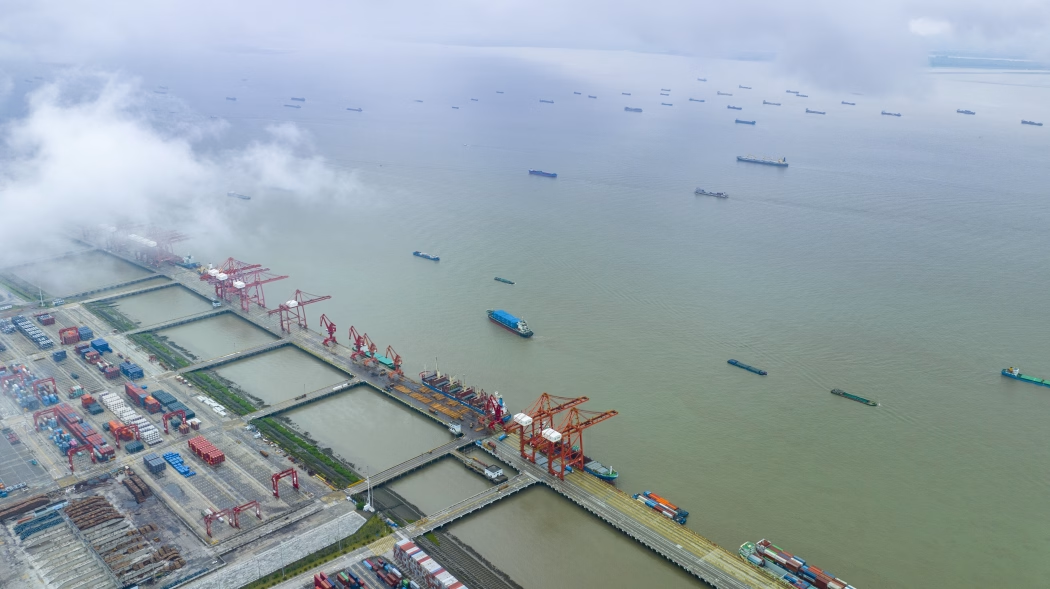## Navigating the Surge in Global Trade: The Impact of $1.9 Trillion in Industrial Lending
In recent developments, the global trading environment is witnessing a significant surge, driven by an extra $1.9 trillion in industrial lending. This influx of capital is not only boosting production capacities but is also dramatically increasing the volume of exports worldwide. As industries ramp up and markets expand, understanding the implications of this trend—as well as the potential effects of the Trump tariffs—is crucial for businesses and investors.
### The Role of Industrial Lending in Fueling Export Growth
Industrial lending plays a pivotal role in the economic landscape, providing the necessary capital for industries to enhance their operational capabilities and production output. With an additional $1.9 trillion injected into this sector, businesses are experiencing unprecedented growth opportunities. This expansion in lending is facilitating a broad spectrum of industries to scale up their production and meet the increasing demand on global fronts.
The ripple effect of this increased capital is evident in the surge of exports. More funds mean more production, higher efficiency, and ultimately, an increased ability to distribute products across international borders. This trend is shaping a new era in global trade, where the export volumes are not just maintained but significantly elevated.
### The Global Spread of Exports and Economic Implications
As more products enter the international market, the dynamics of global trade shift. Countries and regions that rely heavily on imports are seeing a diversification in their supply chains, which can lead to more competitive pricing and improved product availability. On the other hand, exporting countries are finding new markets and opportunities for expansion, which can lead to increased revenues and economic growth.
However, this global spread of exports also comes with its challenges. With increased competition, industries must continuously innovate and improve their offerings to maintain a competitive edge in the market. Additionally, the impact on local industries in importing countries can be significant, as they might struggle to compete with the inflow of cheaper or more diversified foreign goods.
### The Trump Tariffs: A Potential Game-Changer in Global Trade Dynamics
Amidst this backdrop of increasing exports due to heightened industrial lending, the Trump tariffs emerge as a potential game-changer. These tariffs, intended to protect American industries by making imported goods more expensive and thus less attractive, could significantly alter trade dynamics.
The introduction of these tariffs leads to several potential outcomes. For American industries, it might mean less competition from abroad, providing a cushion to grow and solidify their market presence domestically. However, for the global market, it introduces layers of complexity. Countries affected by these tariffs might seek new markets, altering traditional trade routes and partnerships.
Moreover, the tariffs could lead to retaliatory measures from affected countries, sparking a trade war that could have widespread repercussions for the global economic environment. Businesses exporting goods to the U.S. might need to navigate these new challenges, adjusting their strategies to mitigate the impacts of the tariffs.
### Conclusion: Looking Ahead in a Changing Global Market
As the global trade landscape continues to evolve, driven by a significant increase in industrial lending and complicated by geopolitical factors like the Trump tariffs, businesses and policymakers must stay vigilant. Staying informed about these changes and adapting strategies accordingly will be essential for success in this dynamic environment.
Navigating these waters will require a keen understanding of both the opportunities provided by the surge in exports and the challenges posed by new trade policies. With careful planning and strategic adjustments, businesses can leverage this period of abundant industrial lending to secure a strong foothold in the international market, ensuring sustainable growth and success in the years to come.










